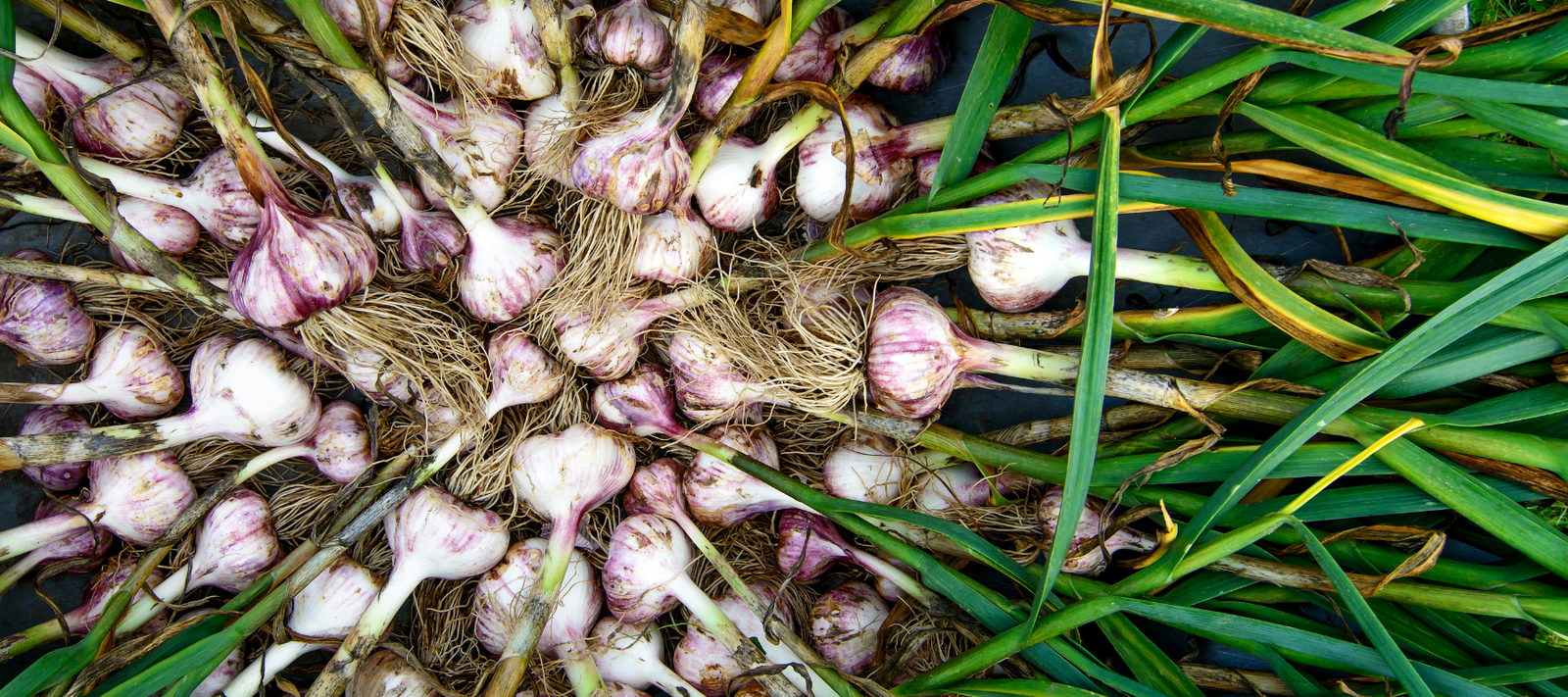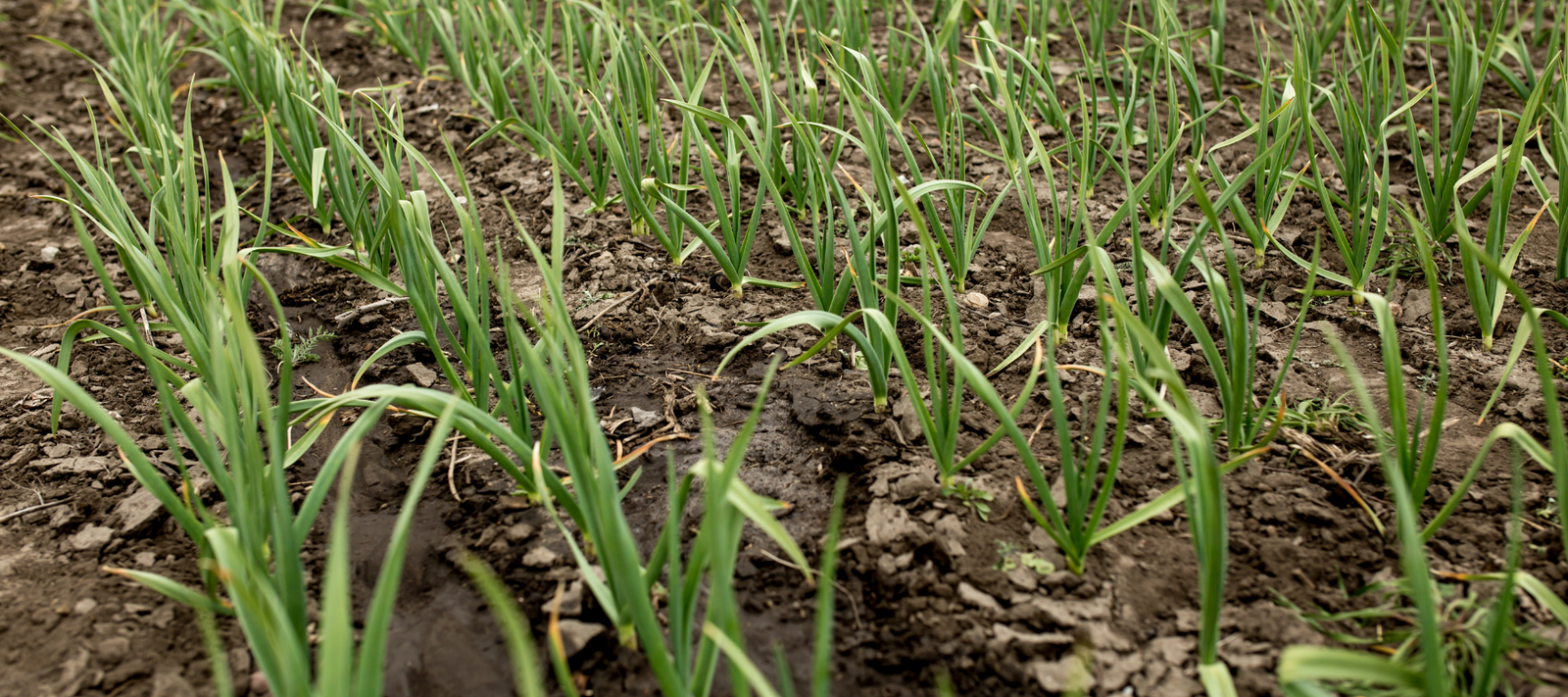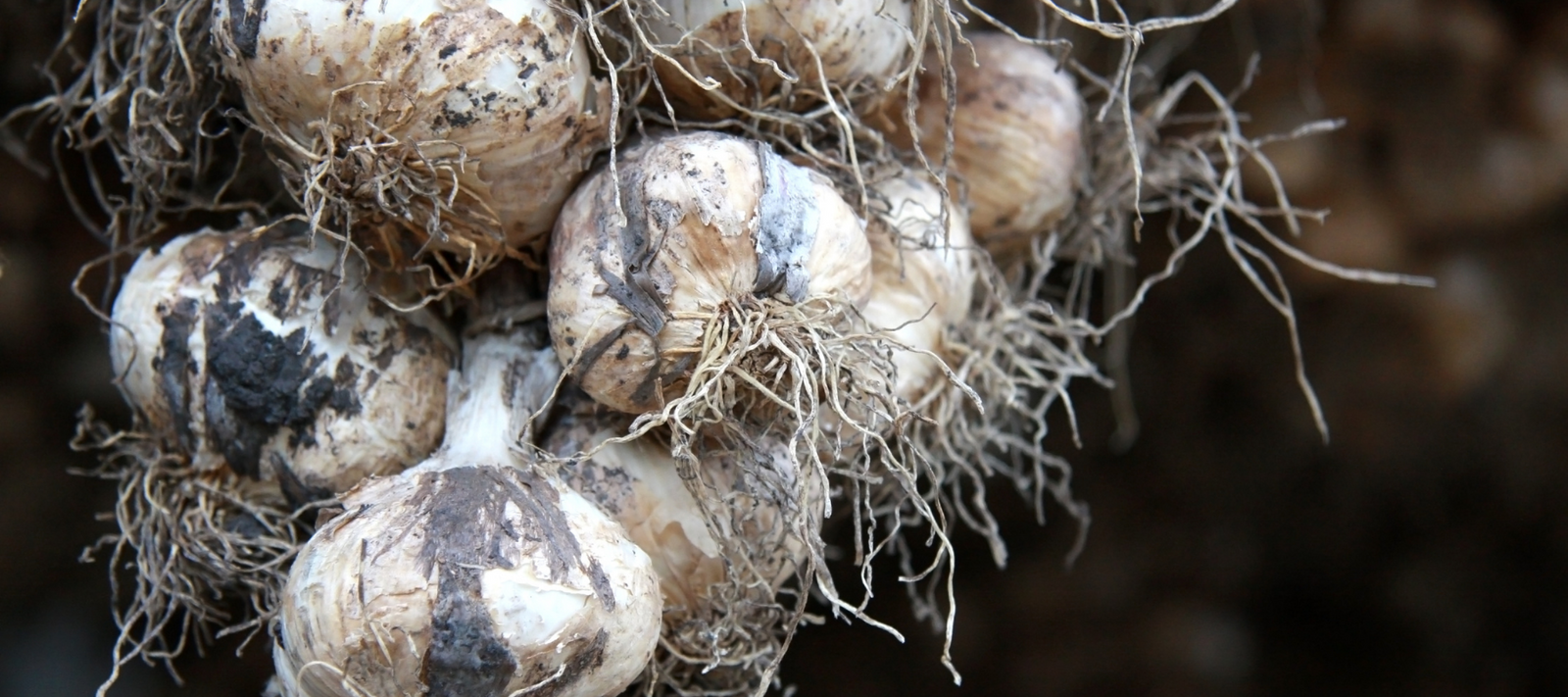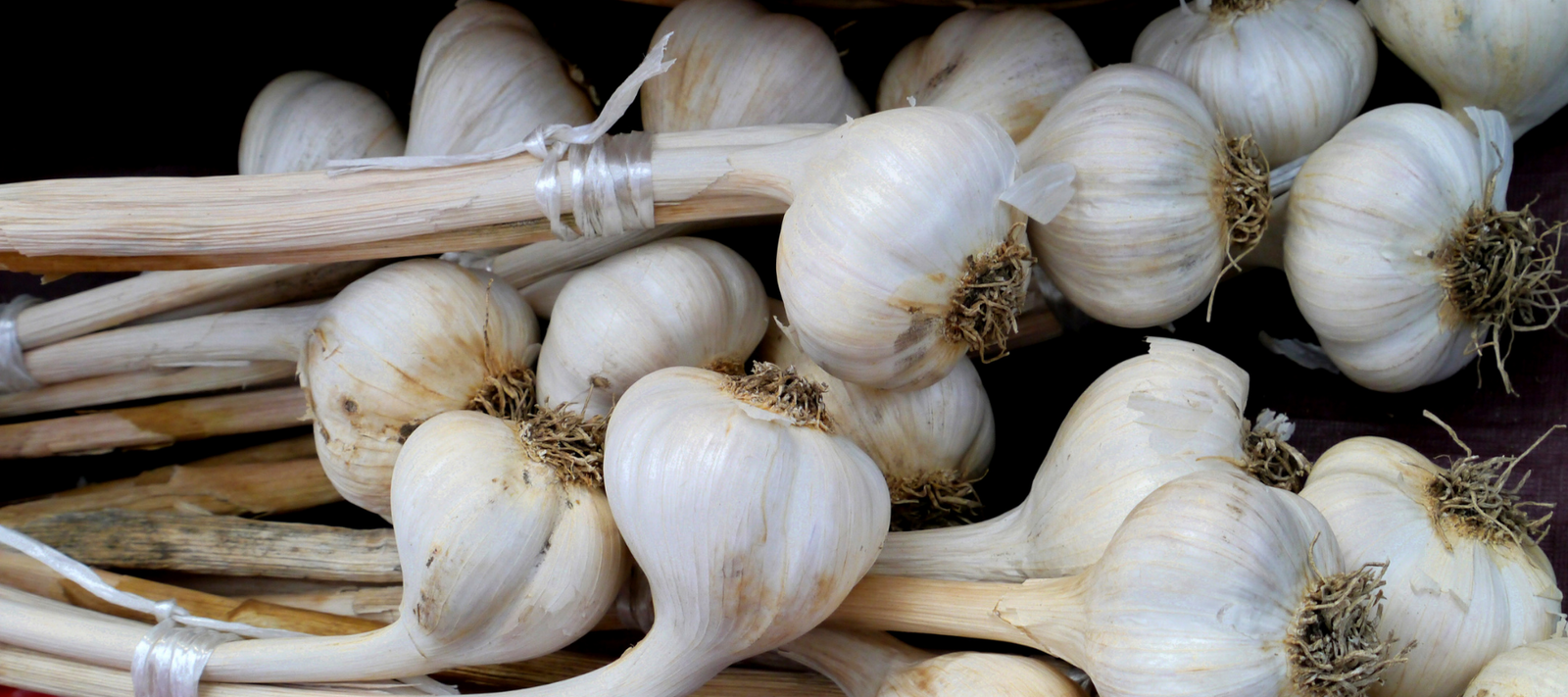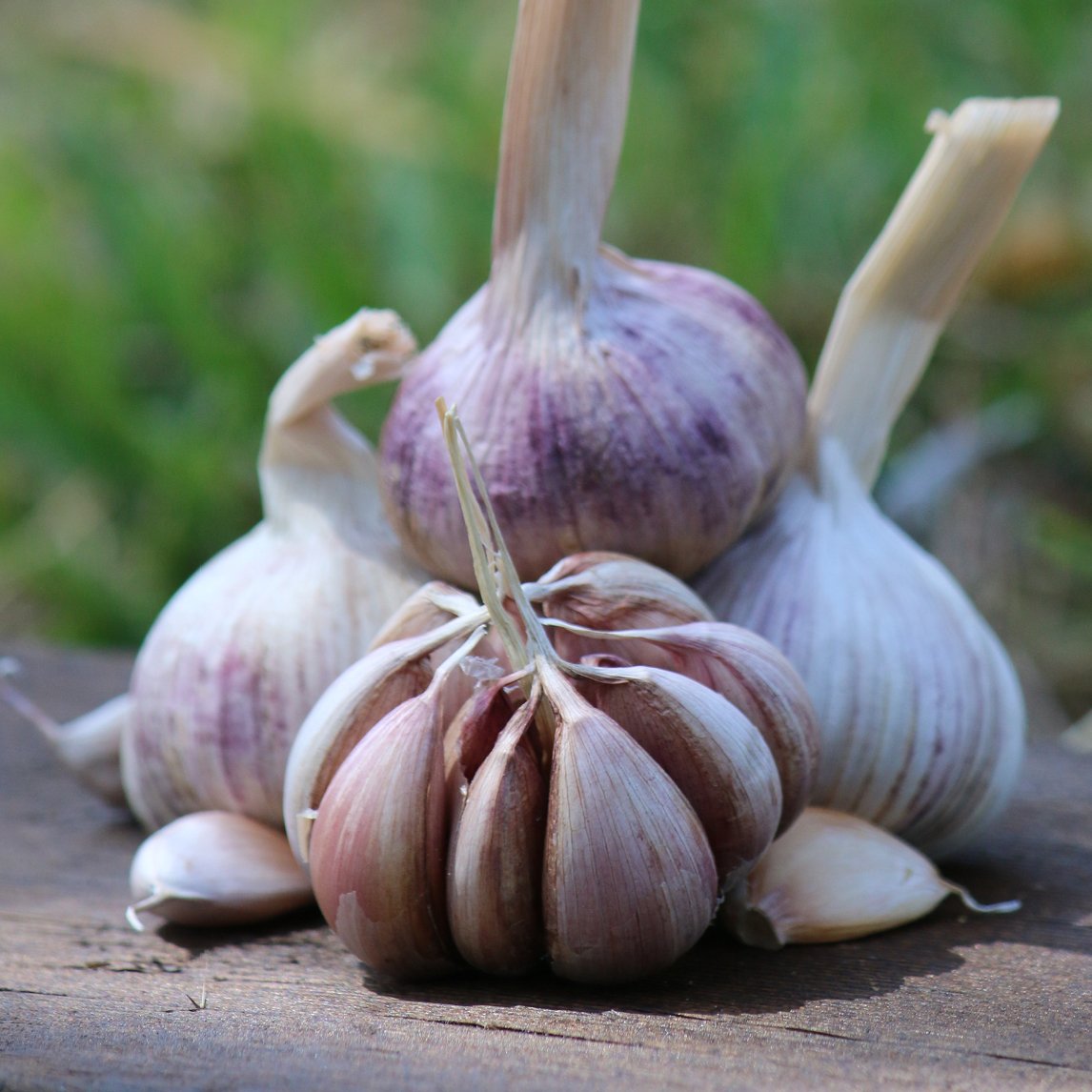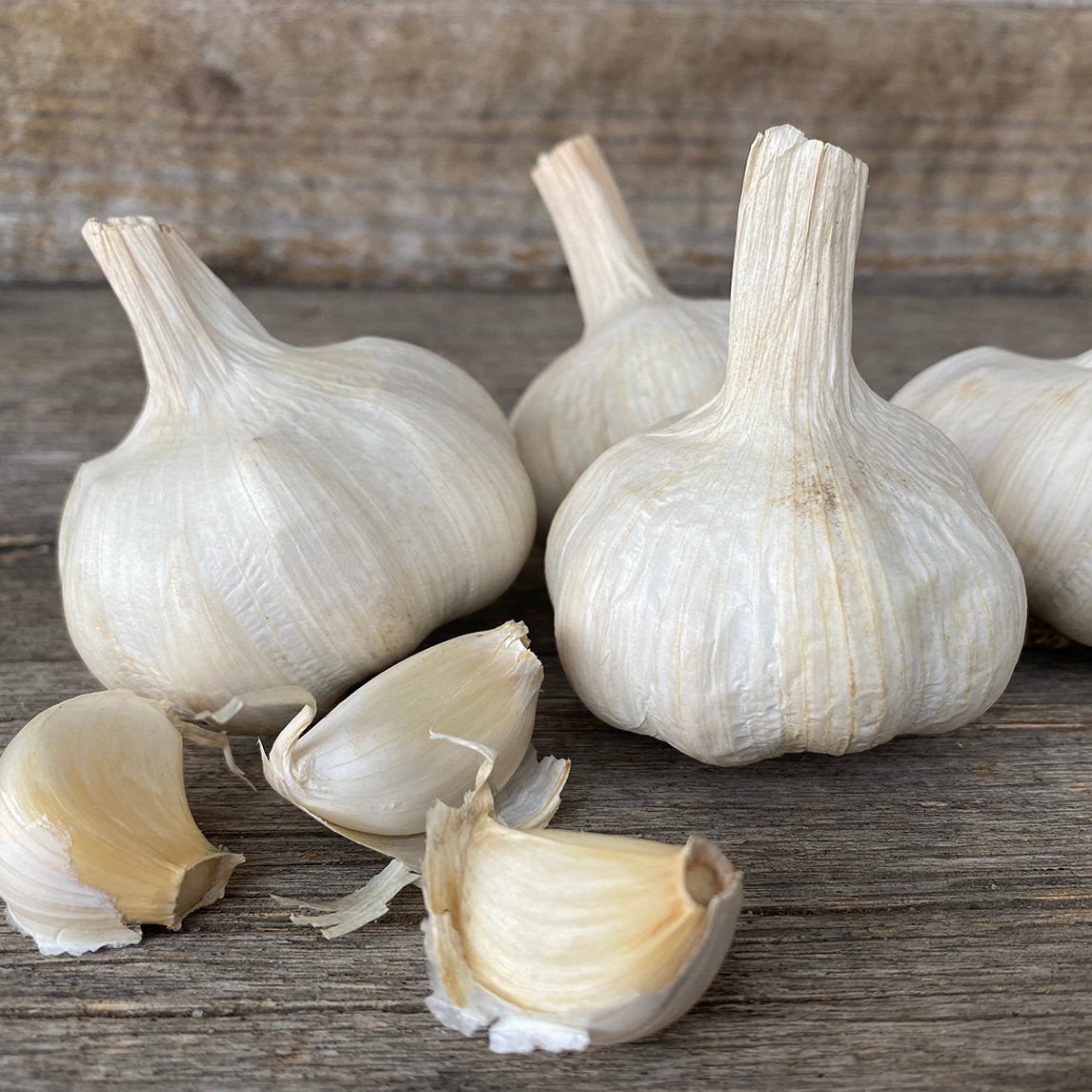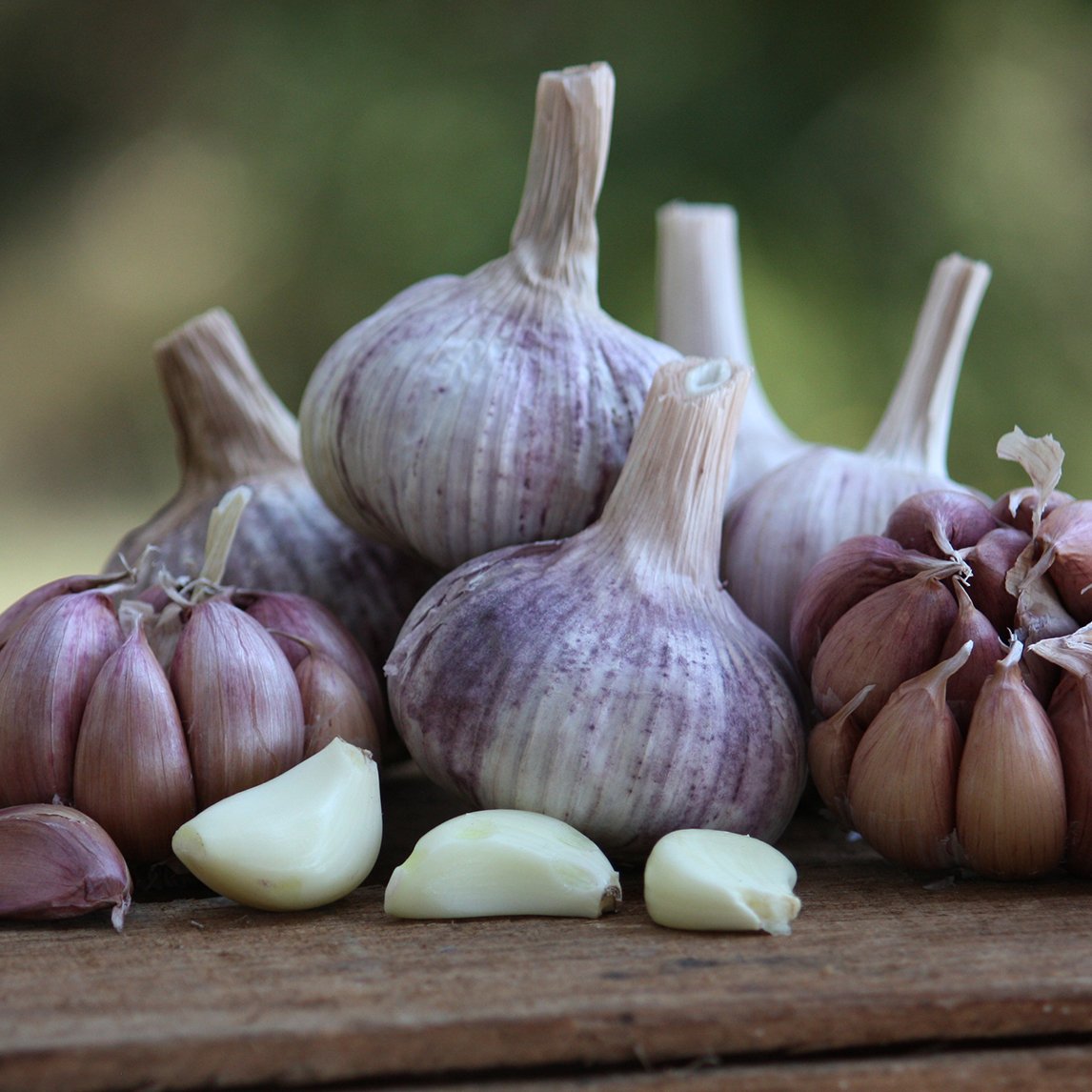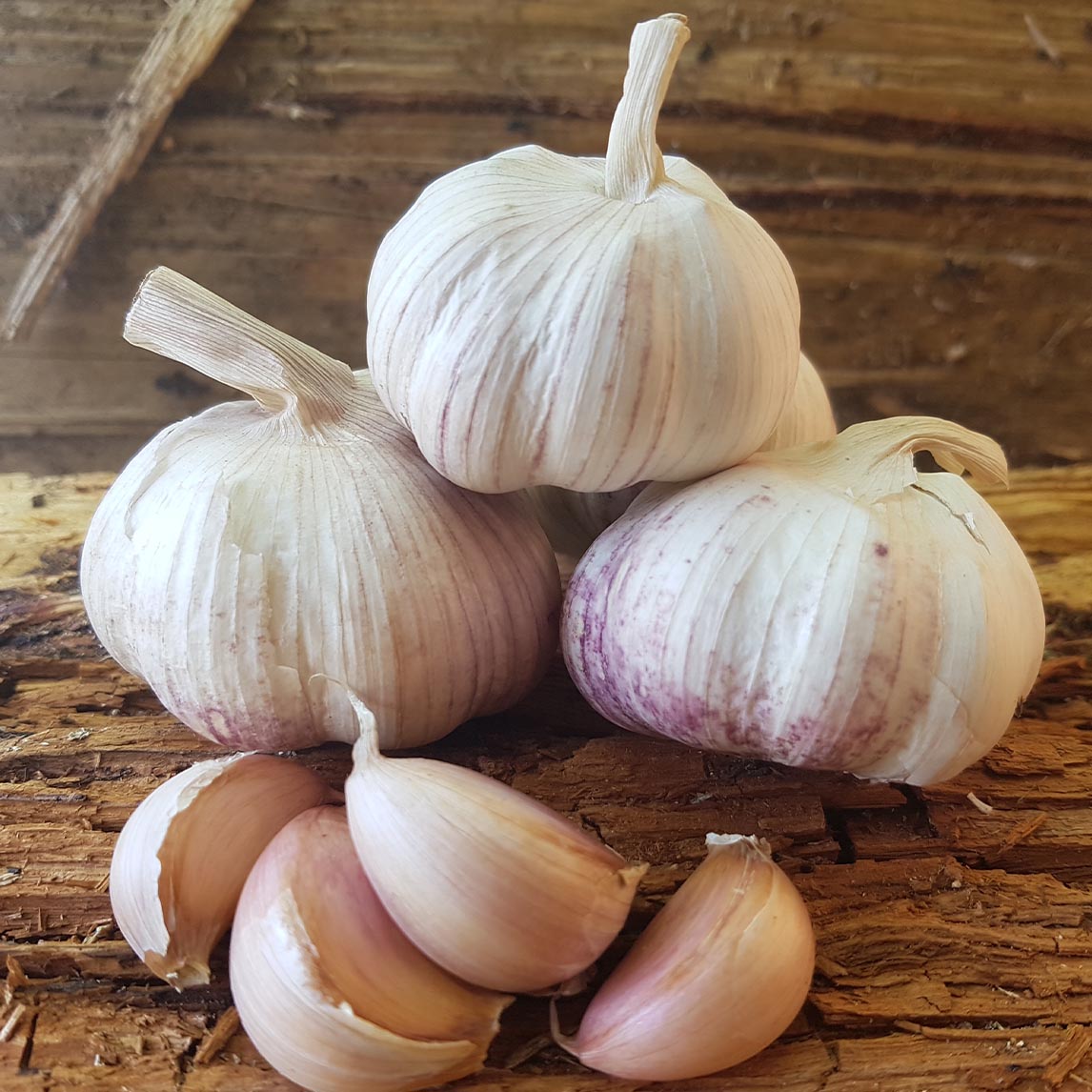
Botanical Name: Allium sativum
Garlic has been valued for both its culinary and medicinal properties for thousands of years. The active constituent allicin is released when the clove is crushed and is known to have antibacterial and antiviral properties as well as boosting the immune system. Garlic will moderate cholesterol, blood pressure and fight cancer. High in antioxidants, garlic is possibly the ultimate health food. Excellent for relieving colds and flu and reducing the likelihood of cross-infection!
How to grow garlic
- Improve soil prior to planting by incorporating well-rotted compost, manure, and organic fertilisers such as rock dust and blood and bone prior to planting. Garlic is a bulb, so good drainage is essential. If your soil becomes damp or waterlogged throughout winter. Mound soil up to improve drainage.
- Split garlic bulbs into their individual cloves. To ensure the best result, select the plumpest cloves for planting out, leaving smaller cloves for the kitchen.
- Plant individual cloves, pointy end upward, in holes 5cm deep and 10-12 cm apart. Space rows 15-20cm apart. Gently backfill and water to settle soil in around each clove.
- Mulch with sugarcane or straw to a depth of 7-10cm. Shoots will push through the mulch so cover the entire area to prevent weed growth during winter.
- Water as required once shoots are around 10cm tall. Garlic prefers a moist, not wet soil. Apply a liquid fertiliser of seaweed (Granular Seaweed Solution) or fish emulsion (Ocean Brew) fortnightly during the growing season to keep garlic healthy and productive.
Varieties
Garlics are divided into two general types. Softneck varieties have no flowering stem and produce 12-13 cloves per head that can store up to 9 months and are ideal for braiding. Hardneck/topsetting varieties (preferred by chefs) produce a flower stem that can be seen in the centre of the bulb and carry small bulbils. Replant these to produce a head of garlic in 2 years or sprout and use fresh.
Cultivation
Growing from Bulbs
Garlic can be planted in autumn, for harvesting in late spring-summer. When you are planting your garlic, break apart the bulb into individual cloves and plant pointy end up, approximately 7cm apart. Cover with approximately 2-7cm of soil (deeper in warmer climates, shallower in cooler climates, or as per packet recommendations). Garlic requires well drained, enriched (well-rotted animal manure/compost) soil in full sun. Additional lime is also beneficial in soils with a neutral to low pH.
The biggest bulbs are formed by planting early autumn, however planting too early will result in bulbs rotting. You can plant garlic when cloves begin to show shoot development in the centre of the clove. You will need to slice open a clove to observe this development.
Sun: Full sun
Soil: Prepare soil by adding organic matter and manure a few weeks prior to planting. Also ensure that soil is loose and free draining. As garlic is grown from autumn to summer, it spends most of its time in quite damp soil. Ensure good drainage so that the bulbs do not rot in the soil before they have a chance to send up shoots.
Spacing: 7cm
Harvest: 240-270 days
Yield: 5 bulbs/metre
Maintenance and Additional Care
Garlic needs the transition between short days lengths (winter) to long days lengths (summer) in order to form bulbs, which is why garlic grown in sub-tropical areas often produces lovely green tops, but small bulbs.
Water your garlic regularly during the growing season especially in spring. You can also fertilise it with well a balanced fertiliser. When the foliage begins to brown off, cut back on the water and fertiliser. This usually happens from November onwards.
Companion Planting
Good companions: lettuce
Bad companions: peas, beans
Pests and Diseases
Garlic suffers from very few pests or diseases. It is occasionally attacked by aphids and diseases such as rust and fusarium root rot.
Growing in Containers
Garlic is great for growing in containers, but it is a crop that takes a long time to develop so weed management and correct watering and fertilizing are important. Liquid feeding regularly with a good organic fertilizer and doses of seaweed solution will ensure good bulb development.
Harvesting Garlic
Harvest garlic when there are 4-5 green leaves left, these leaves become the protective 'skins' needed for good storage. Another 'harvest time' sign is when stems become soft and wilted at the base. Dig up garlic using a fork or trowel to minimise damage to the bulb. Hang harvested garlic in a dry position with good ventilation to allow bulbs to ‘harden’ and leaves to dry. Garlic should keep in a dark, dry place for about 6 months.
Tips and Tricks for Success
- to extend garlic availability it is good to plant both an early (Italian Red) and late (Silver Skin) variety. Russian Garlic also has the ability to store for up to 9 months. In addition to garlic bulbs, you can also grow garlic shoots. Shoots are best grown by using the smallest unwanted cloves planted in a separate bed that can be continually harvested.
- make sure that the soil stays moist for the first few weeks after planting. After that they should be alright to look after themselves unless you are having an extended dry spell.
- worm and seaweed teas can be applied once a month or so.
The best garlic for you to grow at home
Heads of garlic are available from The Diggers Club between January and late April/May. We grow out various garlic varieties and rate them for strength and richness of flavour, length of storage and size. Only the best are chosen and made available to our customers. We also source a selection of organic garlic from certified growers.
Download our Garlic plant, harvest and storage chart.



